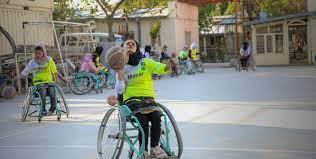
https://www.unicef-irc.org/children-with-disabilities
You will find here a wealth of information about children living with disabilities, the latest researchse and insights from the UNICEF's "think tank", the Innocenti Institute.
Behind those statistics are countless stories, ambitions and obstacles faced every day by children with disabilities. UNICEF’s mission is to include all children with disability in education, health, emergency response, social protection, family and community life.
For this reason, at the Global Disability Summit 2022, UNICEF commits to generating new evidence through research. It commits to establishing a Global Research Agenda and Platform for children with disabilities, and to progressively mainstream disability in all research, to increase investment in inclusion for all children.
UNICEF has a long track record of research and evidence on children with disabilities. Our innovative research at the Office of Research, Innocenti, the Centre of Excellence on Data for Children with Disabilities, and from Region and Country Offices around the world, demonstrate an accomplishment of research and evidence generation spanning decades.
On this page, we showcase examples of research and evidence from the past five years that focus on children with disabilities.
Our history
UNICEF enjoys the unique privilege of maintaining a global research centre for children based at the nearly 600-year-old Ospedale degli Innocenti in Florence, Italy. Established in 1419 by the influential Silkworkers Guild, Innocenti can be viewed as one of the earliest efforts by secular authorities to elevate the concerns of the most vulnerable children to the level of civic priority.










Add new comment